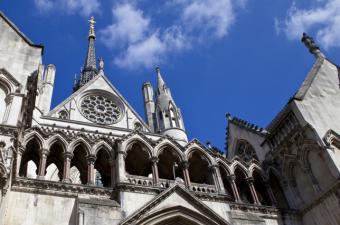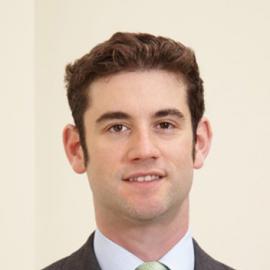
OVERVIEW
There are an increasing number of email fraud cases where parties are deceived into paying outstanding invoices to existing suppliers to accounts not held by that supplier. The fraud often involves the fraudsters cloning real emails of company employees, interposing within legitimate emails and, at the time when invoices are due, asking for funds to be paid to banks purportedly (but not in fact) held by the supplier.
This case is such an example and an example of how the Court is prepared (initially) to grant injunctive relief to freeze the accounts of “Persons Unknown” as well as (as was the case until relatively recently) simply grant a Bankers Trust type disclosure order to reveal the details of the bank accounts to where funds were sent.
Facts
- FrieslandCampina Nederland B.V. (“FC”) was a long-standing supplier of butter to World Protenis Kft (“WP”). It sent two legitimate invoices: one for EUR 2,152,804.50 (“Invoice 1”) and a second for EUR 2,212, 155.00 (“Invoice 2”).
- Legitimate emails passed over the outstanding payment of Invoice 1 between Agnes Bata (“AB”) of WP and Leopold Messan (“LM”) of FC between 18 February 2019 and 25 February 2019.
- EUR 1,652,804.50 was paid by WP towards Invoice 1 to FC’s genuine bank account in The Netherlands, leaving EUR 500,000 outstanding for Invoice 1
- Then on 26 February 2019 at 12:24, AB of WP received an email purportedly from LM of FC. The email (later known to be false) included the chain of legitimate emails between AB and LM referred to above over Invoice 1. It requested payment of the remaining amount and attached new bank details at Barclays for FC (“the Barclays Account”) (later known to be false).
- WP then paid the remaining EUR 500,000 for Invoice 1 to the Barclays Account on 27 February 2019 from its bank in Hungary.
- There was then an email purportedly from AB dated 28 February 2019 stating that the outstanding EUR 500,000 transfer would be delayed due to “an upgrade ongoing” with WP’s bank. The real AN would have known that EUR 500,000 had been paid on 27 February 2019 and there was no upgrade to WP’s bank account.
- Legitimate correspondence then followed whereby the real LM chased the real AB for outstanding monies due on invoices in general terms. The real AB, who of course thought WP had now paid the c.EUR 1.5 million and EUR 500,000 for Invoice I (the latter payment being made to the Barclays Account), emailed the real LM on 11 March 2019 saying WP had just paid EUR 1,512,155 towards the EUR 2,212,150 due under Invoice 2. In this sense, the fraudsters were initially lucky as they had not in fact additionally requested payment for Invoice 2 to the Barclays Account.
- On 11 March 2019, the real LM telephoned the real AB chasing the EUR 500,000 for Invoice 1 and the full amount for Invoice 2. It then became clear to the parties that EUR 500,000 was paid by WP to clear Invoice 1 and c.EUR 1.5 million towards Invoice 2, both to the Barclays Account. The sums had not been received by FC who were not the holder of the Barclays Account.
- Fortunately, WP called its bank on 11 March 2019 and was able to recall the EUR 1,512,155 transfer towards Invoice 2 made on 11 March 2019 but were not able to recall or recoup the earlier EUR 500,000 payment.
Decision
- An interim order was obtained from Swift J for disclosure against Barclays and for an injunction against “Persons Unknown” and for service on “Persons Unknown”, as the legal and/or beneficial holders of the Barclays Account, initially via Barclays. There was also a “gagging order” preventing Barclays from informing the holders of the account until after the initial disclosure. Swift J had relied on the decisions in CMOC v Persons Unknown [2017] EWHC 3599 (Comm) and CMOC Sales and Marketing Ltd v Persons Unknown [2018] EWHC 2230 (Comm) to be satisfied there were similarly arguable causes of action and that an order could be made against “Persons Unknown.”, and was otherwise satisfied that the test for injunctive relief was met on the facts.
- Following the order of Swift J, disclosure from Barclays showed that, fortunately, c.EUR 350,000 of the EUR 500,000 remained in the Barclays Account. However, the remaining c.EUR 150,000 of the EUR 500,000 left the Barclays Account soon after its receipt by way of three transfers ultimately to bank accounts held by entities in Dubai. It also identified the address and holder of the Barclays Account (and revealed other accounts held by him at the bank).
- Anthony Metzer QC (sitting as Deputy Judge of the High Court) continued the injunction at the return date and granted related applications following “Persons Unknown” being revealed. After a thorough review of the evidence and the law (including the decisions of HHJ Waksman QC, as he then was, in the CMOC cases), he concluded that WP had at least a good arguable cases in respect of several fraud-based and resitutionary causes of action and there was a real risk of dissipation that had been heightened by the timing and nature of the transfers out of the Barclays Account; and there had been a total lack of response from the Respondent.
- In respect of CMOC [2017 decision], the Judge relied on HHJ Waksman’s reasoning that [6]:
“Conversely, there is a strong reason for extending the principle which is that the freezing injunction can often be a springboard for the grant of ancillary relief in respect of third parties, which arguably could not get off the ground unless there has been a primary freezing injunction. That is very much the case in fraud litigation and is very much the case here where the first object is of course to notify the banks of the freezing injunction so that they can freeze the relevant bank accounts - irrespective of if and when it comes to the attention of the underlying defendants, And then, secondly, on the basis of that, to obtain vital information from the various banks which may assist in positively identifying some or all of the defendants. And I note that the latest edition of takes the same view. See in particular para.17-019 at p.601 at the top of the page. So it seems to me there is at least a good arguable case that the court has jurisdiction to allow the claimants to bring a claim of this kind.”
Commentary
- The decision is a useful illustration of an increasingly common occurrence of email fraud but the less common occurrence of how that translates into a Court application up to and including the return date.
- It is also an endorsement of the precedent set in the decisions of HHJ Waksman QC (as he then was) in CMOC to grant injunctions against “Persons Unknown” to inter alia avoid the delay in freezing accounts whilst their identify is discovered through disclosure.
- It is also an example of where the majority of the monies were in fact still in the account (and here the larger EUR1.5 million sum was recalled before it was received into that account), suggesting it may be more worthwhile to seek such relief than at first may be thought. Other parties may not be so fortunate.
Joseph England appeared for World Proteins (instructed by Hubert Ashton of Peachey & Co LLP)

